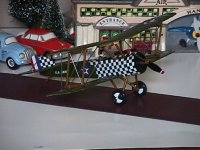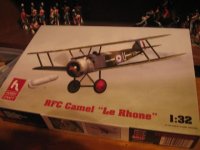maddadicus
2nd Lieutenant
- Joined
- Feb 8, 2006
- Messages
- 3,333
Here's the Gearbox 1917 Sopwith Pup, alongside the Britaind Fokker DR1. This Pup weighs (believe it) 1 pound! All metal, as well as the Britains. Both are 1/32 though the Gearbox is slightly larger with a smaller figure
Enjoy,
Mike
Look for the U.S. version of the Gearbox Pup. The decals and paint is amazing..Michael



